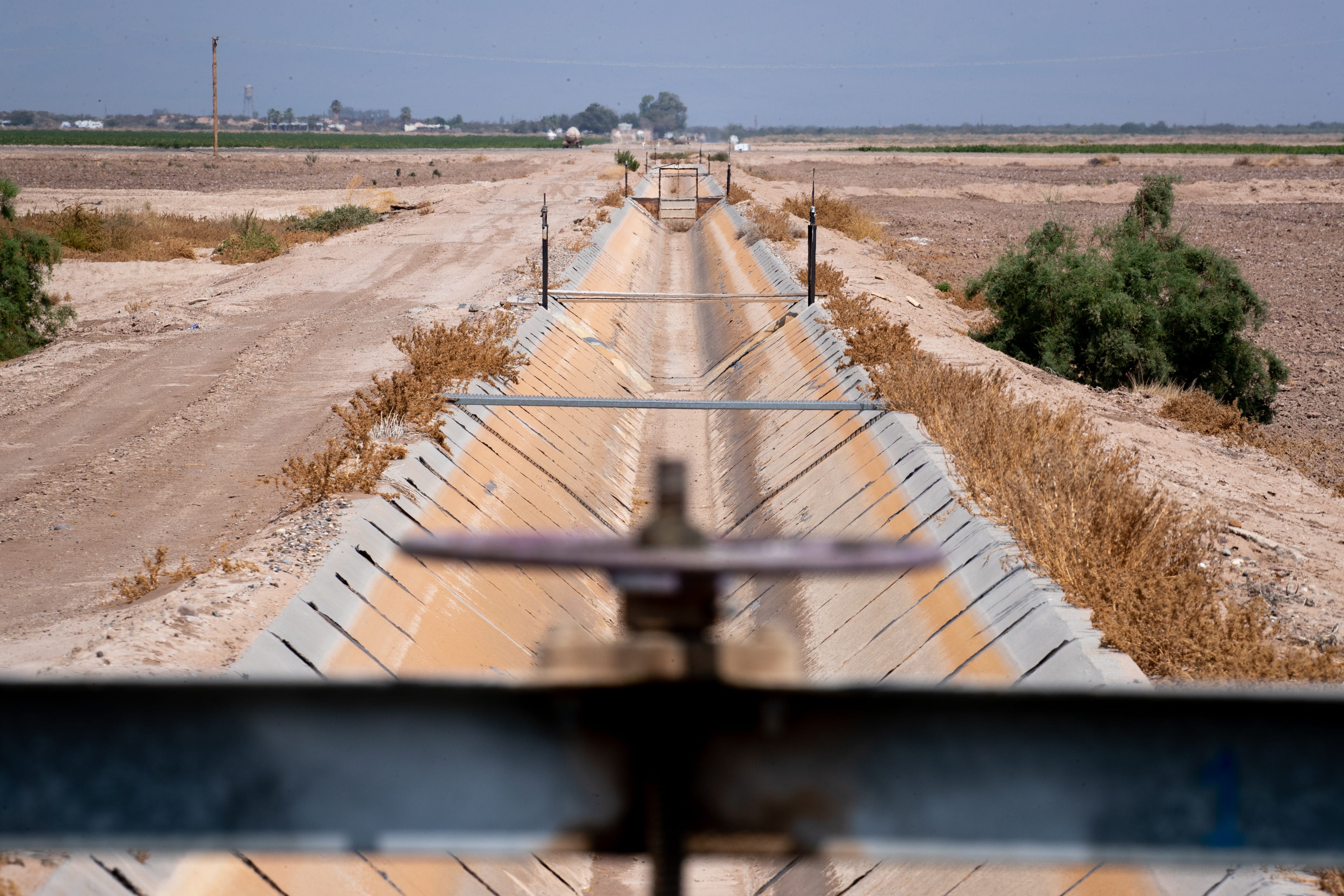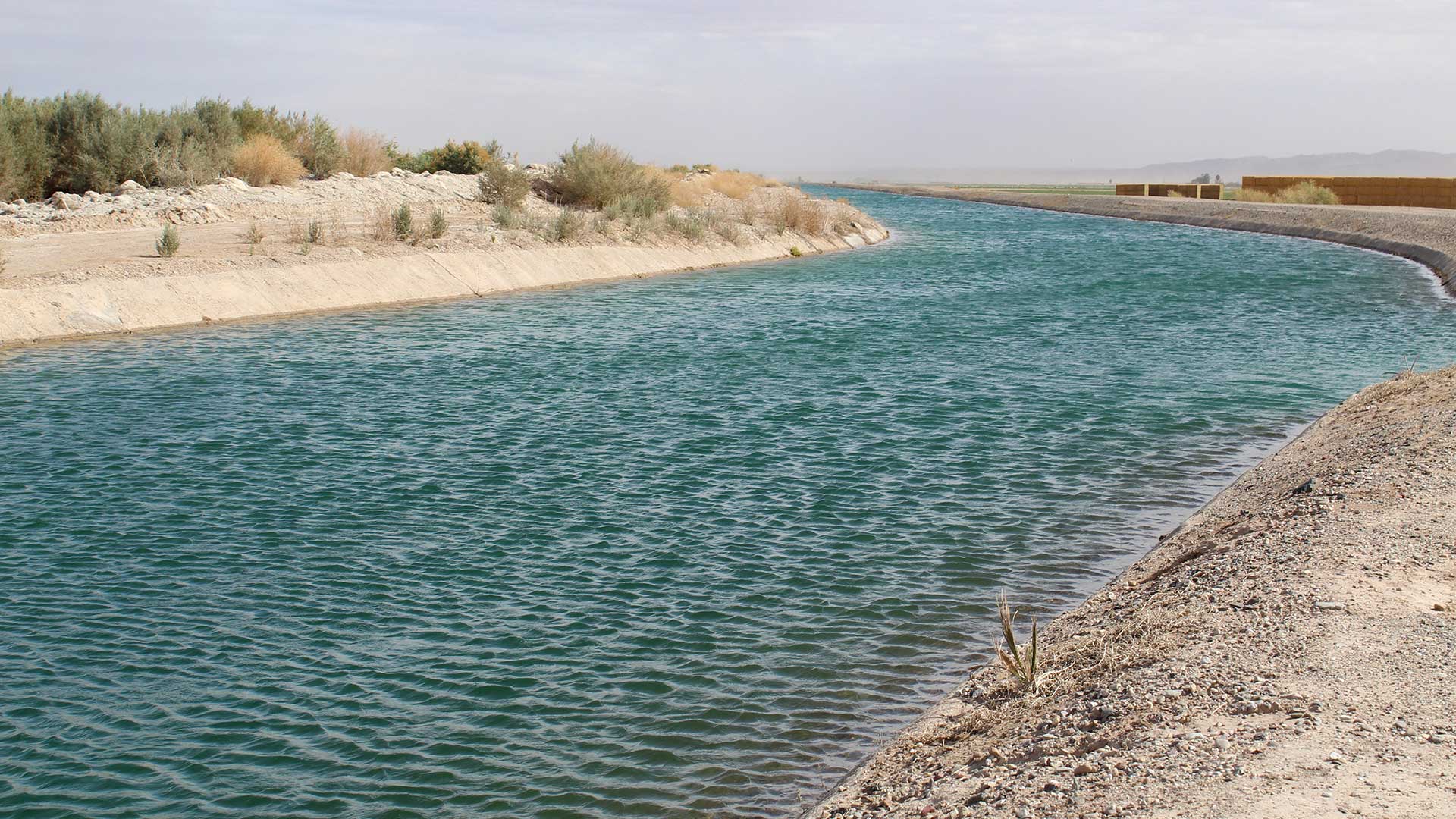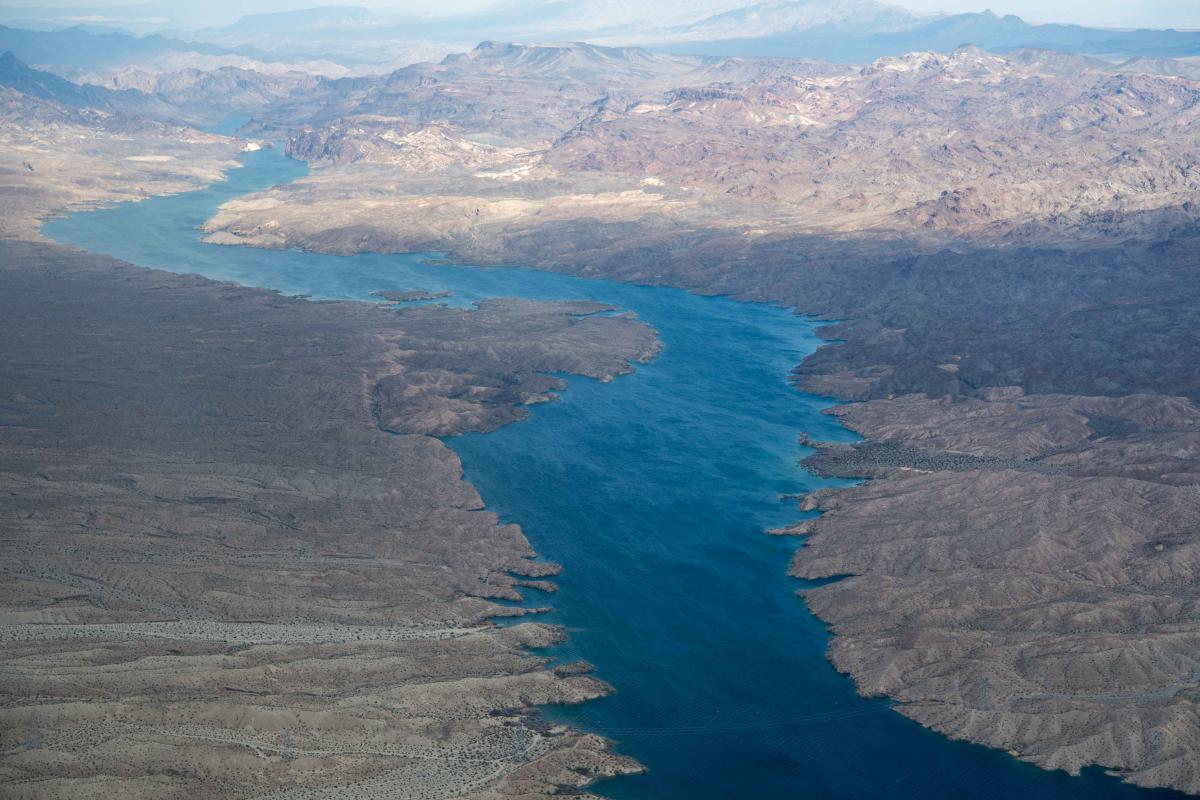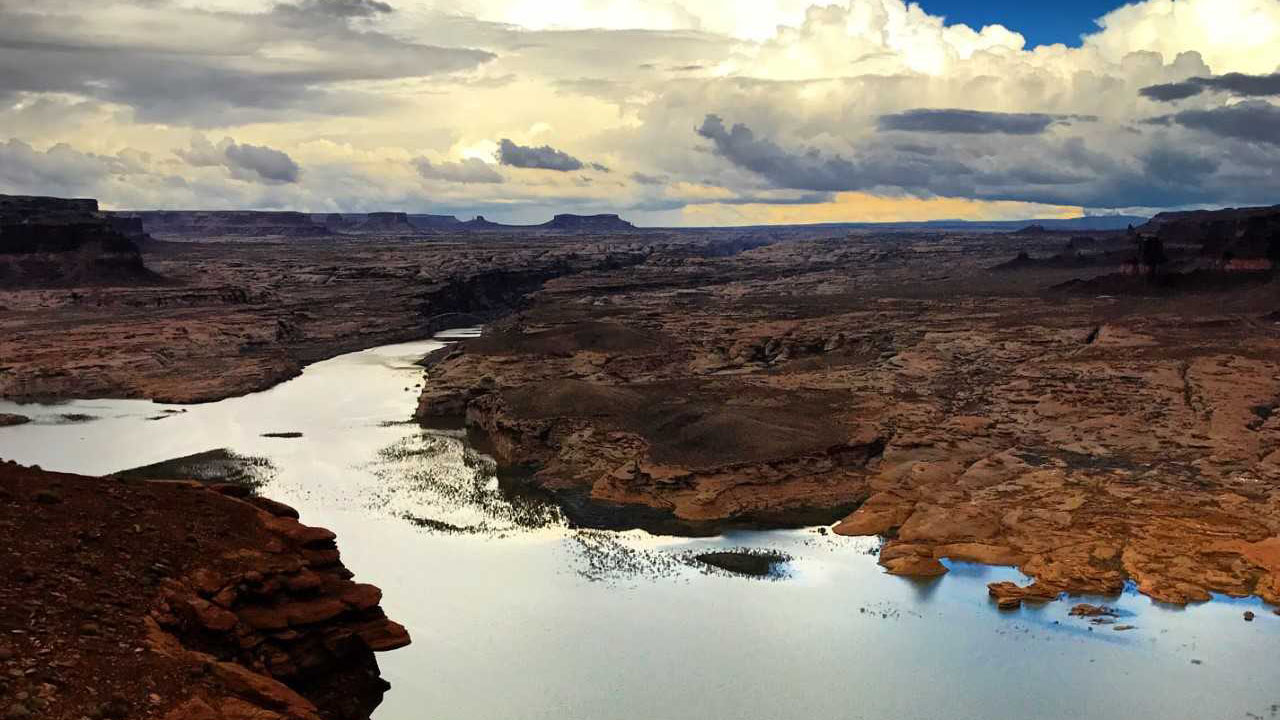colorado river indian tribes water rights
Ute Indian Tribe Ute Mountain Ute Tribe Southern Ute Indian Tribe Jicarilla Apache Nation Navajo Nation Chemehuevi Indian Tribe Colorado. This tribal nation is the largest single user of Colorado River water in Arizona with rights to divert about 662000 acre-feet per year more than double the.

In Drying Colorado River Basin Indian Tribes Are Water Dealmakers Circle Of Blue
Senators Mark Kelly and Kyrsten Sinema introduced the Colorado River Indian Tribe Water Resiliency Act legislation that would empower the Colorado River Indian Tribes CRIT to lease a portion of its Colorado River allocation to Arizona communities and reinvest portions of that revenue into making their water infrastructure more efficient.

. The tribes are allocated 662000 acre-feet in Arizona more. Pursuant to Arizona v. The Colorado River Indian Tribes are currently working with Arizona Sens.
As Shortages Loom in the Colorado River Basin Indian Tribes Seek to Secure Their Water RightsWESTERN WATER IN-DEPTH. B Water rights of allotteesThe Secretary shall protect the rights of the allottees to a just and equitable distribution of water for irrigation purposes pursuant to section 7 of the Act of February 8 1887 commonly known as the Indian General Allotment Act 24 Stat. Percent of the basins annual average water supply while over a dozen others still have outstanding.
California 1963 established water use rights of the Colorado River for CRIT as well as the Cocopah Indian Tribe Chemehuevi Tribe Fort Mojave Indian Reservation and Fort Yuma Indian Reservation. 381 referred to in this section as the Act. This figure is equivalent to nearly 26 of the mean annual flows of 1244 maf at Lees Ferry from 2000-2018 and nearly 22 of the mean annual flows of 1476 maf at Lees Ferry from 1906-2018.
At the Darden School of Business he talked about Governance and Water Scarcity in the Colorado Basin. There are an estimated 4000 persons constituting the four tribes of CRIT. If tribes were to use the full amount of the Colorado River rights they control that could mean less water for some states already dealing with first-ever water cuts due to historically low.
Nothing in this compact shall be construed as affecting the obligations of the United States of America to Indian tribes The Upper Colorado River Basin Compact went one step further by declaring tribal water rights are to count against. These rights are in general the most senior water rights in the Basin and therefore some of the most protected from shortage. Roughly 20 percent or 36 billion cubic meters 29 million acre-feet which is more water than Arizonas total allocation from the river.
584 Colorado River Indian Tribes Water Supply CRIT possesses present perfected federal Indian reserved water rights from the Colorado River mainstem pursuant to the decree in Arizona v. Senate - Indian Affairs. What Role for Indian Tribes.
With the oldest claims to water the tribes command a considerable role in directing the regions future. Yet as the Colorado River Research Group has noted before existing uses of basin water already. Tribes with water rights are both helping prop up Lake Mead and encouraging others to conserve.
The Colorado River Indian Tribes Water Resiliency Act of 2021S3308 would create the authority for CRIT to further exercise its water rights. 2 As detailed below in Tables 1 and 2 Colorado River Basin tribes currently hold water rights to 3206088 acre-feet of Colorado River system water annually. The Ute Indian Tribe has a pending lawsuit challenging the project arguing that the pipeline would obstruct the tribes efforts to fully develop.
The Colorado River Indian Tribes commonly referred to as the CRIT secured water for its land near Parker long before statehood. Daryl Vigil is the Water Administrator for the Jicarilla Apache Nation and the former Chairman of the Colorado River Basin Ten Tribes PartnershipVigil contextualized the. Section 7 of the 1922 Colorado River Compact which addresses Native Americans consists of a single sentence.
Tribes with reservations in the Colorado River Basin currently have quantified rights to divert about 20. With the oldest claims to water Native American tribes in the Colorado River Basin command a considerable role in directing the regions future. D aryl Vigil visited the University of Virginia on April 5 and 6.
The member tribes are. The Colorado River Basin Tribes Partnership also known as the Ten Tribes Partnership is an organization formed in 1992 by 10 federally recognized tribes with reserved water rights in the Colorado River Basin. Senate - 03232022 Committee on Indian Affairs.
Kelly Mark D-AZ Introduced 12022021 Committees. As Shortages Loom in the Colorado River Basin Indian Tribes Seek to Secure Their Water Rights. A study of tribal water rights could shed light on future Indian water use.
S3308 - Colorado River Indian Tribes Water Resiliency Act of 2021 117th Congress 2021-2022 Bill Hide Overview. 150 2006 commonly referred to as the 2006 Consolidated Decree. Combined the tribes hold rights to a substantial portion of the Colorado Rivers flow.
Roughly 20 percent or 29 million acre-feet which is. Combined they hold rights to a substantial portion of the Colorado Rivers flow. In response to the federal plan to hold back water in Lake Powell this year Colorado River Indian Tribes Chairwoman Amelia Flores released a statement saying her government is in discussions about leaving more of its water in Lake Mead.
This authority would enable CRIT to allocate its water resources to provide a short-term water supply for entities experiencing drought or shortages across Arizona and protect natural habitats along the Colorado River. The amounts priority dates and states where the. There are 30 federally recognized tribes in the Colorado River Basin that collectively have rights to 32 million acre-feet MAF or about 25.
8 rows Although the Colorado Ute Tribes originally settled their water rights claims in the. Partnership Tribes have reserved water rights including unresolved claims to divert nearly 28 million acre-feet of water per year from the Colorado River and its tributaries. Colorado River As the Colorado River Basin becomes drier and.
Mark Kelly and Kyrsten Sinema to pass the Colorado River Indian Tribes Water Resiliency Act of 2021 which would allow the.

Cap Board Supports Colorado River Indian Tribes Water Resiliency Act The Daily Independent At Yourvalley Net

U S Senate Committee To Hear Testimony On Tribal Water Rights Azpm

Colorado River Water With Senior Rights Could One Day Be Up For Grabs

As Shortages Loom In The Colorado River Basin Indian Tribes Seek To Secure Their Water Rights Water Education Foundation

In Drying Colorado River Basin Indian Tribes Are Water Dealmakers Circle Of Blue
Colorado River Indian Tribes Tribal Water Uses In The Colorado River Basin

As Shortages Loom In The Colorado River Basin Indian Tribes Seek To Secure Their Water Rights Water Education Foundation
Tribal Water And The Colorado River Thoughts On The Recent Crwua Meeting Jfleck At Inkstain

Crit Gets Support For Leasing Its Water Parker Live

Crwua Colorado River Water Users Association

Colorado River Indian Tribes Wikiwand

Colorado River Water With Senior Rights Could One Day Be Up For Grabs

Interactive Map Indian Water Rights In The Colorado River Basin Circle Of Blue

Bill Would Allow Colorado River Indian Tribes To Lease Water To Other Cities Azpm

With Water Leasing Vote Colorado River Indian Tribes Will Seek Consequential Legal Change Circle Of Blue

Colorado River Indian Tribes Crit System Conservation Project Business For Water Stewardship
Quechan Indian Tribe Tribal Water Uses In The Colorado River Basin

Legislation Would Let An Arizona Tribe Lease Its Colorado River Water Allocation
